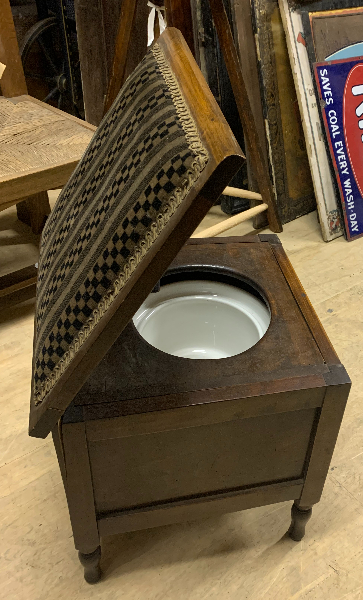
There are some items that are particularly special as they represent a lost or significant part of our culture. Likewise, there are items that are such a common necessity, that they are rarely celebrated at all. This vital, lifesaving device from Worcester City’s collection, is often overlooked, perhaps due to our own modesty and embarrassment about a crucial fact of life.
The lack of this small, often unappreciated invention can lead to the polluting of water sources and a disastrous knock-on effect to the health of people throughout the globe. Worldwide, this sanitation crisis costs the lives of 1000 under-fives every day.
This was once the case in Britain, where the lack of adequate sanitation caused multiple cholera epidemics, and the deaths of over 100,000 citizens. Medical minds were convinced that the epidemic was spread via dank air, dirt, or interpersonal contact. It was not until a third outbreak in London in 1854, that conclusive evidence from Dr John Snow, positively identified a cause. Snow linked the pollution of drinking water downstream of sewage outflows, to a huge rise in cholera cases. His findings led to the immediate removal of the handle of a Soho water pump, and the loss of life decreased immediately. It was this act, that led to serious improvements in how sewage and water was dealt with in built up areas.
Toilets are not a new concept, and predate this crisis by several thousand years. Dealing with waste products has been a fact of life for millennia, and evidence of neolithic toilets in Scotland show that Britain has been looking for civilised solutions since at least 3000 BC. Romans saw the act as a communal occasion, with large, multi-occupant public latrines. The Sidbury Barrel in the collection is a fifteenth century barrel toilet excavated in the centre of Worcester in the 1970s.
The origins of the first flushing toilets are up for debate, but the Palace of Knossos in Crete featured pans flushed with a water supply in 1700BC. In Britain, Sir John Harrington invented a water closet with a raised cistern and flush system in 1592. Thomas Crapper is most famously linked to the flushing toilet, but was in fact, a talented sanitary engineer and plumber, who created many related innovations such as the U bend, and floating ballcock. The quality of his products led to a Royal Warrant, after supplying the plumbing for Edward VII’s Sandringham House. His name adorned manhole covers in Westminster Abbey, as well as many household cisterns, making “the Crapper” a common shorthand for the toilet.
The alternative to the toilet was the potty or chamber pot, which in medieval times was simply emptied into the street from an upstairs window. It was this act that contributed towards the contamination of water sources. It was not until 1848 that the British Government made it a requirement for every new house to include a water closet or earth closet. Despite this, it was well into the late 20th century before grant schemes ensured that they were common in all houses. Before then, most people had a box in the bedroom like this one to use.
Often a decorative piece of furniture, crafted to suit the bedroom, with a lid to discretely conceal a removable lidded potty. Upholstered to resemble a stool, the ornamental nature of some pieces is the reason that the word commode can describe both decorative furniture and furniture containing a potty. The most humorous common title for this piece of furniture was “Thunderbox”, due to the acoustic echoes that accompanied their use.